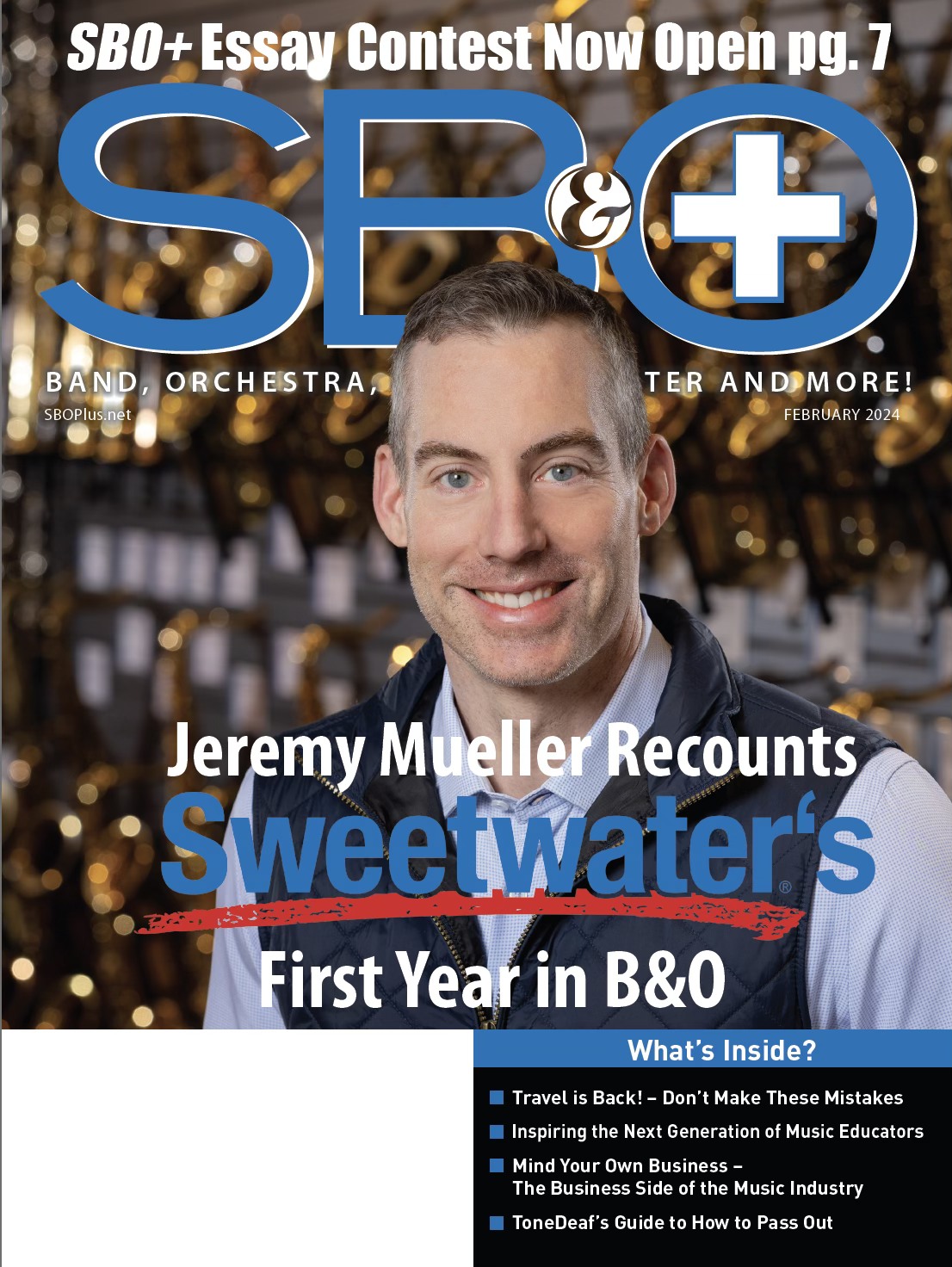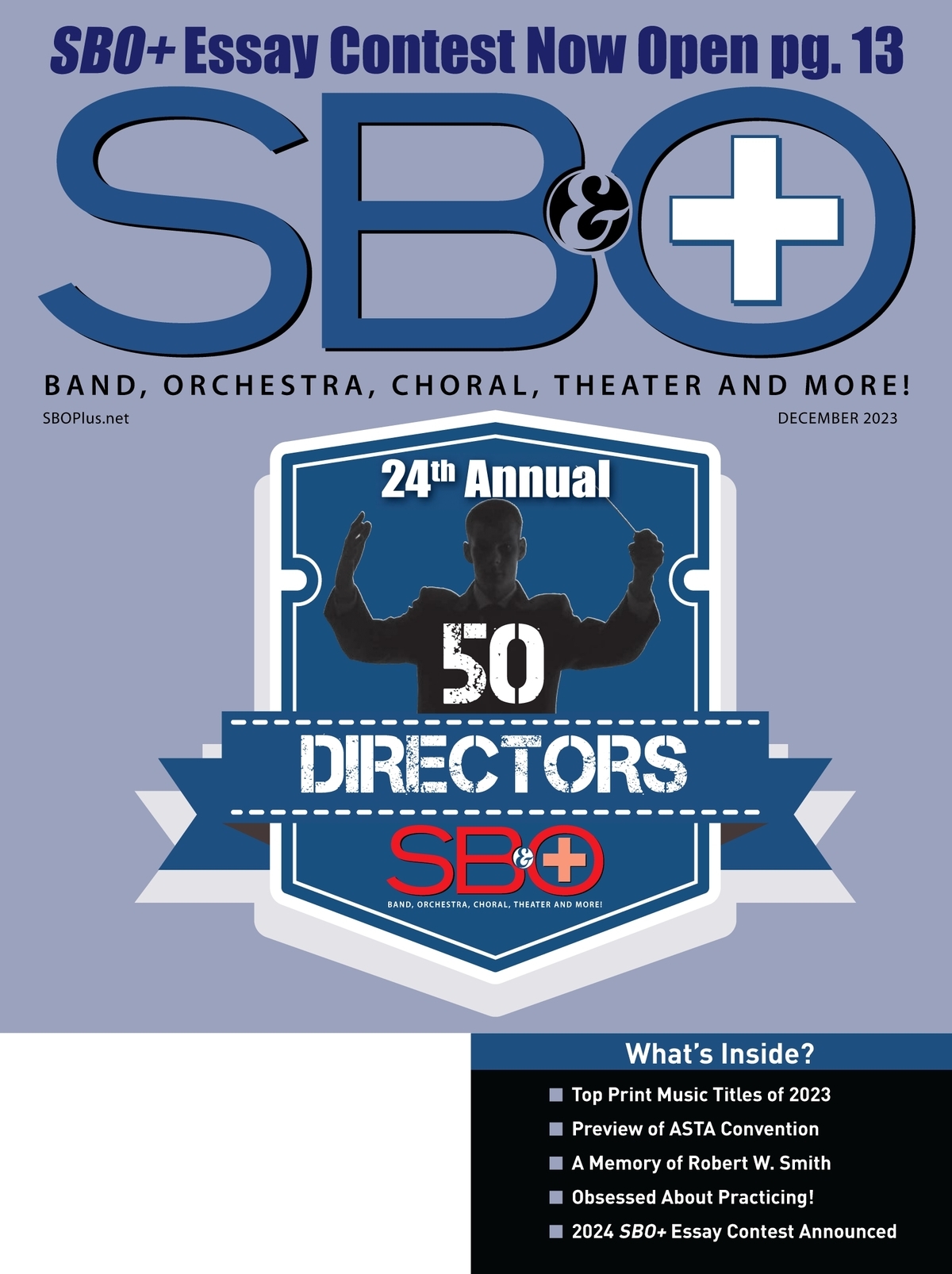EDUCATORS SUBSCRIBE FOR AS LOW AS $0.00! CLICK HERE!
 This installment of core concert band repertoire features reviews of music suitable for an array of grade levels from composers Michael Sweeney, Charles Carter, Norman Dello Joio, and Charles Rochester Young. “Frank Ticheli’s List” is a compilation of outstanding repertoire for concert band selected by celebrated composer Frank Ticheli. These pieces have been reviewed by Gregory Rudgers and Lawrence Stoffel.
This installment of core concert band repertoire features reviews of music suitable for an array of grade levels from composers Michael Sweeney, Charles Carter, Norman Dello Joio, and Charles Rochester Young. “Frank Ticheli’s List” is a compilation of outstanding repertoire for concert band selected by celebrated composer Frank Ticheli. These pieces have been reviewed by Gregory Rudgers and Lawrence Stoffel.
“Distant Horizons” by Michael Sweeney
 Hal Leonard
Hal Leonard
Grade Level: 1
Approximate Duration: 2:35
This eminently performable composition offers Level One players the occasion to experience elements of music performance that are more commonly reserved for more advanced players. There are many passages that are thinly scored, thus challenging Level One bands who may be accustomed to the block scoring of much of Level One literature. The percussion writing here is very effective and an integral part of the character of the work. Percussionists are given parts that are technically available to young players but quite creative, involving several percussive colors that they may not have heard before. Sweeney also employs simple and direct mixed meters effectively, at times inserting 2/4 measures in the 4/4 second section.
“Distant Horizons” is programmatic in that it successfully creates two distinct moods: the first, a haunting invocation of a misty dawn or sunset, and the second a highly rhythmic, percussive evocation of majestic scenes from the world of nature. The slow opening begins with solo percussion and a sustained concert F that passes from instrument to instrument, thus providing the listener with subtle changes of color. Written in transposed Dorian and using chromaticism in contrary motion, the composer achieves an effect that will engage both performers and listeners. This opening “movement” gradually adds voices and concludes with all players engaged. The second portion of the work is marked at 144 to the quarter note, but that should not deter directors looking for quality Level One literature.
Reviewed by Gregory B. Rudgers.
halleonard.com
“Song for Winds” by Charles Carter
 Daehn Publications
Daehn Publications
Grade Level: 1 ½
Approximate Duration: 2:30
“Song for Winds” was among Carter’s last contributions to the young band repertory. This charming, unassuming composition is conservatively scored, but the orchestration never sounds stale. The constant change and shading of timbres from phrase to phrase are pleasing. Lyrical melodies are presented simply, first by flutes and bells, then trumpets in unison. Clarinets and horns continue, then single reeds add yet another color to the palette of sound. Despite the economical part writing (most instruments have just a single part, and only the clarinets and trumpets have two-part writing), Carter’s orchestration presents a new timbral combination with every major phrase.
In terms of orchestration, Charles Carter excels, showing great variety in his scoring. Carter is also never stingy with the ritardando, and “Song for Winds” comes to a satisfying, effortless conclusion with a slowing of the tempo – first to a brief Maestoso statement, then ultimately to a quite final chord.
It remains unfortunate that some composers insist upon titling band works “for winds.” Not only are such titles largely inaccurate, they undermine the radical, positive transformation of percussion part writing that has come about since the 1960s. Band music is composed for winds and percussion, not just winds! So despite misgivings over the title, Carter has successfully orchestrated a band work in which even the percussion writing is lightly scored, transparent, refreshing, and delicate.
“Song for Winds” proves yet again that Charles Carter has earned a permanent and prominent place in the young band repertory.
Reviewed by Lawrence Stoffel.
daehnpublications.com
“Satiric Dances” (for a comedy by Aristophanes) by Norman Dello Joio
Associated Music Publishers, Inc./Hal Leonard Corp.
Grade Level: 4
Approximate Duration: 7:00
Dello Joio composed “Satiric Dances,” a three-movement suite, drawing upon incidental music which he composed for a theatrical production of an ancient Greek comedy by Aristophanes. Despite the Athenian inspiration, this music is overtly Italian! This is zesty music celebrating life in a bountiful way that Dello Joio’s Italian heritage would demand. After all, what other composer would use “Allegro spumante” as a tempo marking? (Spumante is Italian champagne.)
The first movement is exotic, highly chromatic, occasionally octatonic. It is first hypnotic and then bombastic music. The movement concludes with a short, spirited, frenzied dance – a tarantella? (Dello Joio, the Italian, makes his primo appearance.) The second movement opens with sad music (“Mesto”) and then answered with heartfelt respite (“sentito”). This is emotional music worn on the sleeve. (Dello Joio, the Italian makes his secondo appearance.) The third movement (yes, the tempo marking really is “Allegro spumante”) is rollicking, spontaneous, and ripping fun. In vino veritas! (Dello Joio, the Italian, appears a nel finale.) Or to quote the playwright Aristophanes, “Quickly, bring me a beaker of wine, so that I may wet my mind and say something clever.” The suite barrels into a frenzied, festive, frenetic conclusion.
“Satiric Dances” presents two particular technical challenges. Sparse scoring in much of the second movement requires confident, soloistic skill. And plentiful 16th-note runs in the final movement do not always lie well on the clarinet. Despite these challenges, this invigorating music exudes love for life and invites all to live richly.
Reviewed by Lawrence Stoffel.
halleonard.com
“Tempered Steel” by Charles Rochester Young
 Southern Music Company
Southern Music Company
Grade Level: 5
Approximate Duration: 7:45
Charles Rochester Young’s “Tempered Steel” was the first commission solicited by the Big 12 Band Director’s Association. It is a challenging work infusing fully 505 measures with great activity and excitement, as well evocative lyricism. “Tempered Steel” is a celebration of triumph over adversity, employing driving rhythms, marcato declarations, and dynamic energy to suggest an indomitable spirit. Continuing the metaphoric nature of the work are many metallic sonorities available in the modern concert band, including suspended cymbals, chimes, xylophone, bells, tam tam, two brake drums, vibraphone, and large and small triangles. All of these colors bring a mechanical cast to the work and, in combination with the woodwinds and brasses, yield significantly original sonorities. The dominant compositional device employed in this truly original work is a symmetric hexachord that is exposed and developed through a wide variety of gestures and themes, juxtaposing the hexachord against itself and other derivative expressions.
The work begins with an explosive fanfare in compound meter and explores all ranges of forte. Mixed meters ensue before the compound meter returns in a more transparent and thinly scored presentation of the motivic material. A haunting lyric section then occurs, wandering from major to minor in its voicings. The remainder of the work combines the lyricism, the aforementioned fanfare and the driving, aggressive statements to a truly thunderous finale. This work gets one’s attention immediately and holds it firmly in its grasp.
Reviewed by Gregory B. Rudgers.
southernmusic.com
Frank Ticheli is a professor of Composition at USC Thornton School of Music, and is the recipient of a 2012 Arts and Letters Award from the Academy of Arts and Letters. He is the principal judge of the Frank Ticheli Composition Contest, sponsored by Manhattan Beach Music. His works for concert band are among the most celebrated in the industry.
Lawrence Stoffel serves as director of Bands at California State University, Northridge (in Los Angeles).
Gregory B. Rudgers of Ithaca College has spent his career studying, conducting, composing, and interpreting wind band literature from beginning bands to college and university levels.
“Frank Ticheli’s List” debuted in MBM Times, published by Manhattan Beach Music.






